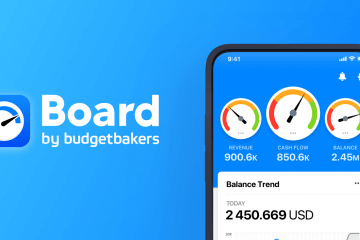A Beginner’s Guide to Small Business Finance
When it comes to small business finance, where do you begin?
For those looking for a beginner’s guide to small business finance, we can help you get started today. If you need to get your finances in order, to help promote your business and grow, there are some essential things you need to know.
In this article, you will learn:
- How to formulate and execute a business plan
- Learning how to begin raising money
- Managing your cash flow with maximum efficiency
Step One: Making A Business Plan
A business plan is an ideal place to start.
If you want to get a handle of your finances, and you want to run a business, you need to be able to plan out your goals well in advance. Without this, you’ll miss out on an opportunity to drive revenue and growth within your business.
What would a business plan cover? Consider the following:
- Revenue Forecasting
- Investment and Cost Plans
- Cash Flow Scenarios
First, you need to have a strong idea of just how much money you will be able to make – and how that might change from year to year. That is why revenue forecasting is so important because it can help you understand the stages of growing your business.
Next, is understanding both investment and cost plans. You need to know how much money you need to put into your business, whether by yourself or by raising it, and how much will go out in terms of costs – thinks like rent, salaries, and more.
Lastly, part of your business plan should account for specific cash flow scenarios. What happens if you are short one month? How would you re-invest your money were you to have a sizeable amount of free cash? These scenarios can help you gameplan and grow.
Step Two: Raising Money
Every business begins as a concept. The next thing you need, though, is money.
That is why raising money is so important to most small businesses. Let’s consider start-ups, for example, which rely on numerous rounds of funding to help begin operating in the eventual hopes of turning a profit and rewarding their investors.
When you have a solid business plan, you essentially have a roadmap for growth that you want investors to buy into. How do you do it, though? Let’s begin with the basics…
When businesses, like start-ups, raise money, they do it in what are called rounds. There are essentially four rounds, and they look like this:
- Seed Round
- Series A Round
- Series B Round
- Series C Round
The seed round typically involves a small amount of money, simply enough to help a business function with the bare resources it needs. Normally, this occurs around a very well-formed concept, and the seed round gives it the opportunity to get off the ground.
Series A funding is typically after a product or service has been formulated, to the point at which it can begin gaining momentum. Larger than the seed round, investors exchange cash for equity in a business – in order to profit when it grows.
After a while, after a business has taken off, Series B funding is what gives a company the burst of momentum that they need. This is a fairly significant increase in funding and can range anywhere up to $50 million.
Last, but certainly not least, is Series C funding. This is when a company has proven its business model, and wants to either aggressively expand or build out more products or services. The capital required here is to fund those expansions accordingly.
Funding is an imperative part of small business finance, and being able to access funds – and to attract investors – can often be seen as the number one challenge for most businesses.
Step Three: Managing Cash Flow
After you have an idea of what your business does, and once you have some money onboard – whether your own or from investors – you need to be able to manage your cash flow.
Your cash flow basically boils down to:
- Money Received – Sum total of operating revenue (selling goods and services) as well as new funding (equity investments, etc.).
- Money Spent – These include your operating costs (like space, payroll, and more) as well as repayments and acquisitions.
Failing to secure a positive cash flow will damage your business – in fact, without it, your business cannot possibly survive.
That is why knowing, and managing, how much cash is coming in, going out, and when it’s doing either is absolutely critical.
Overall, we can think of managing cash flow based on four key skills:
- Planning
- Forecasting
- Tracking
- Acting On Variance
All of these are essential. They allow you to set your goals, project into your future, keep track of the day-to-day, and to make decisions quickly. How do you do them all, though?
Your Small Business Finance Solution: Board
Board is the small business finance tool that you need.
It’s a tool that allows you to stay on top of your business’ finances in a way that is friendly, easy-to-use, and intuitive.
Most of all, it includes all of the important things that we discussed today. With Board, you can set goals, forecast into the future, and automatically track your expenses.
It’s a tool that relies on taking all of that hard data and transferring it into easy-to-understand reports and insights that you can act upon.
Most of all, it gives your business the runway you need to raise capital early – looping in investors, based on your financials, to give them confidence in your ideas.
Get Started with Board Today
Interested in gaining more insight into your finances?
Board is an easy way to change the way you do business and allows you to make smarter and timely business decisions in a matter of moments.
Ready? See for yourself some of the benefits of working with Board today by signing up for our WebApp [‘WebApp’ Link]. Or, find the app on the App Store or Google Play.


